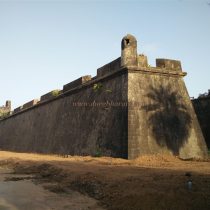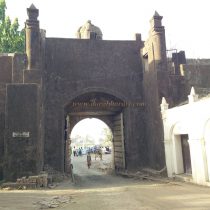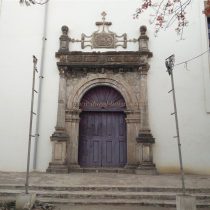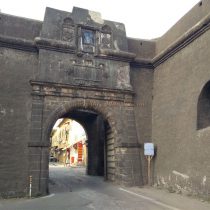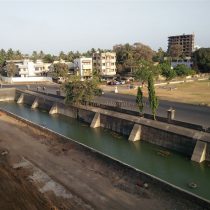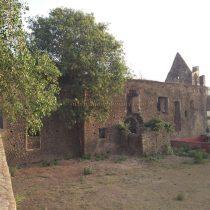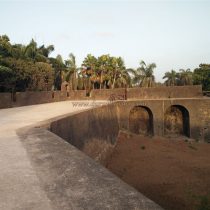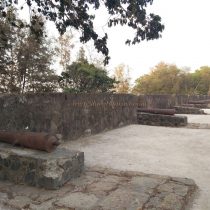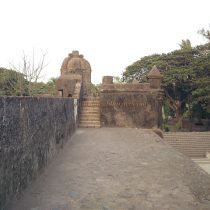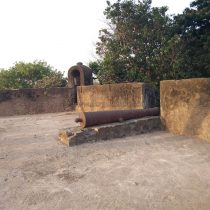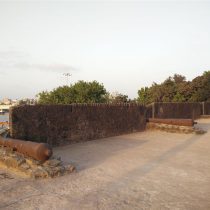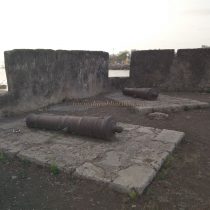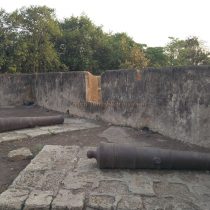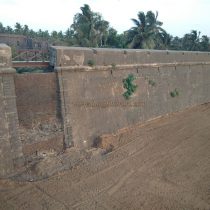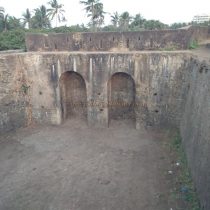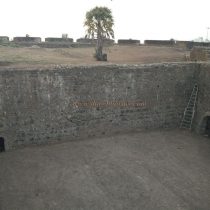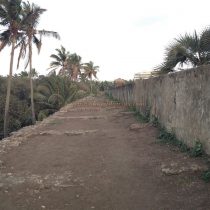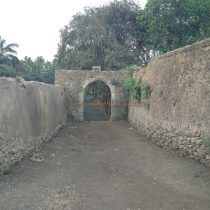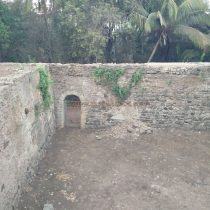MOTI DAMAN
TYPE : COASTAL FORT
DISTRICT : VAPI
HEIGHT : 0
GRADE : EASY
The city of Div Daman is at a distance of 180 km from Mumbai. Outside of Maharashtra, this city has a beautiful fort with a connection to Portuguese culture and Maratha history. Due to the river Damanganga flowing through the city of Daman, the city is divided into two parts, Moti Daman and Nani Daman. As the Portuguese were a seafaring tribe, they built two forts on the mouth of the Damanganga creek to maintain direct contact with Portugal and protect the city of Daman. The two forts are opposite each other and the largest Daman fort is on the south bank of the river Damanganga. The original settlement of the Portuguese is in Moti Daman fort, so Moti Daman fort is bigger than Nani Daman fort. The connection of the Marathas with this fort is that during the Vasai campaign of the Marathas in 1739, the fort was cordoned off by the Maratha forces so that the Portuguese could not get help for the Vasai fort.
...
The province was under the control of Sultan Muhammad Shah Begda of Gujarat before the Portuguese settled here. He built the fort of Daman to protect the port. In 1523, the Portuguese asked Shah for permission to trade and started trading. However, due to some disputes with him, in 1529, the Portuguese attacked the port of Daman. The port was frequently attacked by the Portuguese between 1529 and 1559. Finally, the Governor of Goa, Constantino D. Braganza attacked Daman with about 3,000 troops and 100 warships and captured the port and fort. On his way back to Goa, Governor Braganza appointed Captain Diego de Narhona as Major to guard the port and fort and gave him 1,200 troops to defend it. After this, in the year 1559, the old fort of Daman was demolished and a new fort was built in its place. According to the inscription on the south gate, the work of this gate and the bastion in this area was completed in 1581 after the invasion of Mughal ruler Akbar, while according to the inscription on the north gate, the construction of the fort in this area was completed in 1593. So it took 24 years to build this entire fort. Built-in the year 1593, this fort is still in its infancy. The construction of the fort is a masterpiece of Portuguese architecture. The fort is of simple rectangular shape spread over 84 acres and has ten arrow-shaped bastions on the ramparts of the fort. On the west side of the fort is the Arabian Sea, on the north, are the Gulf of Daman, and on the other two sides, the fort is protected by digging deep trenches. The ramparts of the fort are about 3 km long, 10 feet wide, and 20 feet high. It has two entrances, one on the north and one on the south. Apart from this, the third one facing west towards the sea is currently closed with bricks. The fort has important government buildings like churches, court, hospitals, colleges, secretariat, municipal offices, post office, etc. Many wells have been dug to supply water to the fort. In another word, the entire city, which is self-sufficient, is located inside this fort. Apart from this, there is an old lighthouse on the west bank of the fort to locate ships. A new lighthouse has been erected outside the west bank of the fort. Because the fort is still in its infancy and due to its proper care, all the remnants of the fort's i.e. the gates, bastions, ramparts, and moats are still in good condition. Both the main gates of the fort are carved with Portuguese insignia and inscriptions and the entire gate is decorated in Portuguese style. If you come across Nani Daman Fort and see the Moti Daman fort across the creek from the pedestrian bridge, you enter the fort through the north gate. In front of this gate is the port of the fort and there is a new jetty to stop the boats. The straight path through this door leads out through the second door on the south. There are three inscriptions carved on the outside of the door and this door is still in good condition. Due to the large gates of the fort, a large number of vehicles can pass through this fort. There are steps to climb the coast on the left. There are many such steps to reach the coast, but without going to the coast, you should go straight to the second gate of the fort by looking at the architecture of the fort. On the way, you can see the old structures of the fort, as well as some of the cannons, kept on their premises. On the right-hand side of the road, you can see the church of Bom Jesus, built between 1603 and 1606. The craftsmanship and wood carvings of this church are worth the visit. The road to the right of the church recently leads us to a dilapidated 17th-century building. Known as the Saint Dominican Monastery, this building is a masterpiece of Portuguese architecture. On December 19, 1961, when Indian troops entered the fort of Moti Daman, Portuguese troops took up support of this building to fight the Indian troops. At that time, the building was severely damaged in the fight with the Maratha Regiment. A monument has been erected at Moti Daman Fort to commemorate the achievements of the Maratha Regiment. After seeing this building, you should come to the main road and come to the south gate of the fort. There is an inscription carved on the outside of this door and the arch of the door is decorated. The wooden doors of this gate are still in good condition and have big sharp nails on them. Adjacent to this bastion are steps leading to the adjoining bastion. There is a basement under this bastion and the access to it is closed but you can see this basement from the bank of the rampart. There is a wooden flagpole on the quadrangle structure of this bastion and an arch for the bell next to it. Almost all of these arches for the bells are constructed on all of the bastions on the fort. There is a moat outside the fort in this direction and it is still full of water. Starting from this bastion, going around the fort, and coming back to this bastion, you will complete your fort round. The ramparts of the fort are about 10 feet wide and in some places, this distance is 20 feet. The ramparts and bastions are lined with barrage for cannons and guns. The capsule bastion is a special feature of the Portuguese construction, with its circular bases for soldiers to stand on bastions and ramparts. While walking around the fort, one can see six cannons inside the fort and more than 25 cannons on the ramparts. All these cannons are neatly stacked. The ramparts of the fort are very strong and adjacent to the ramparts are many barns and guardrooms as well as some basements. To see all this, it takes more than two hours to cross this 3 km long rampart. The distance from Vapi to Daman is 12 km and Daman can be reached from Vapi railway station by bus, rickshaw, or private vehicle. From the Nani Daman bus stand, cross the pedestrian bridge over the creek and in fifteen minutes you reach the north-facing gate of the fort.
© Suresh Nimbalkar

